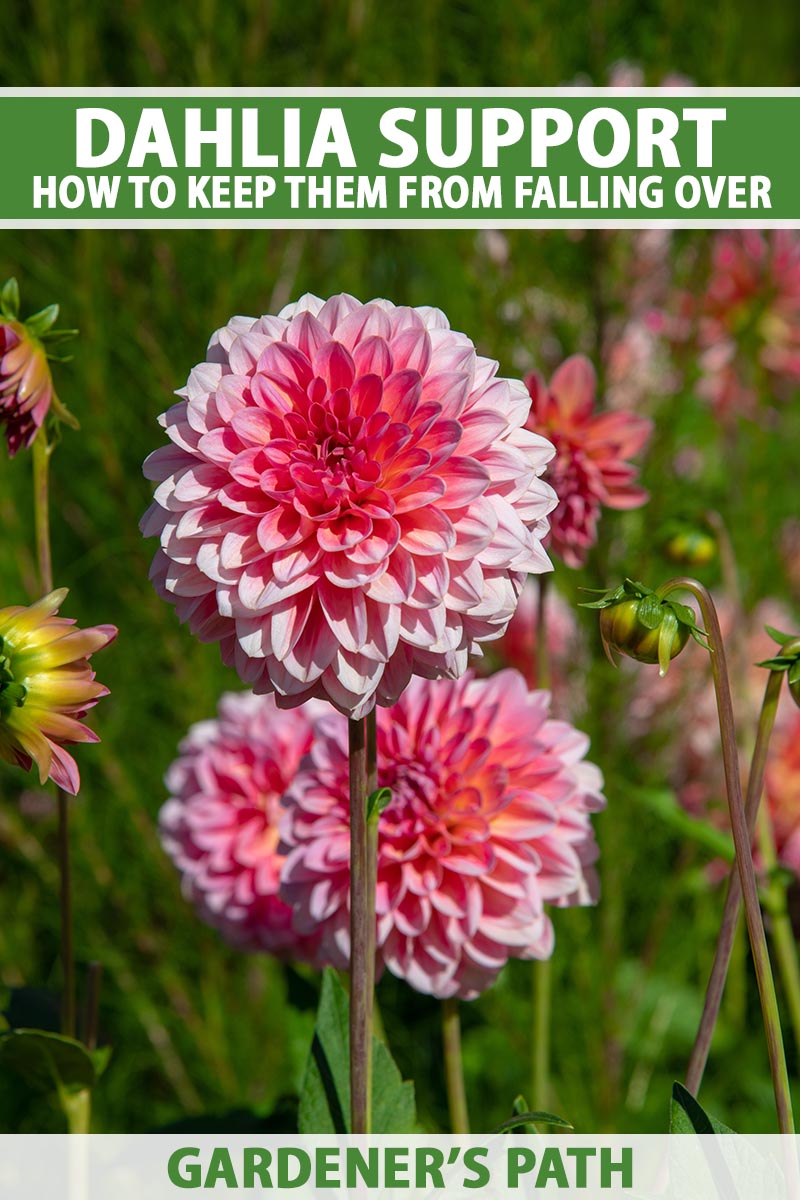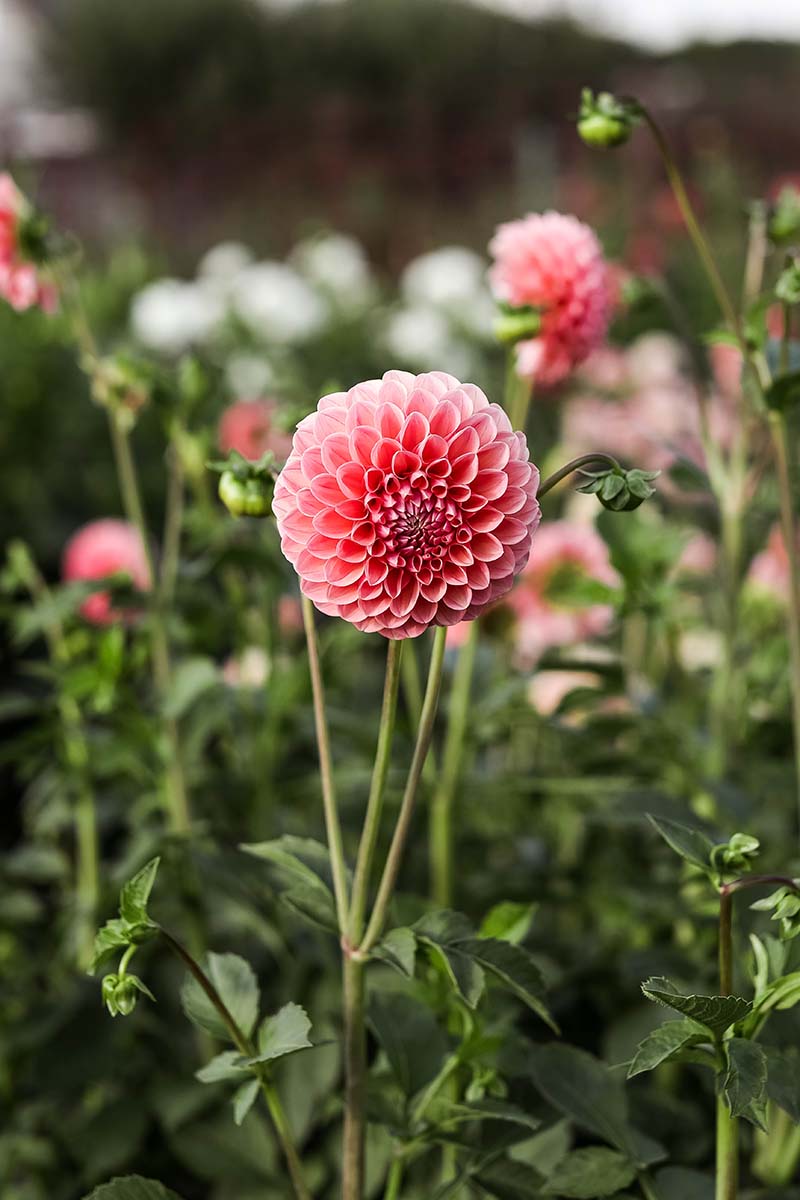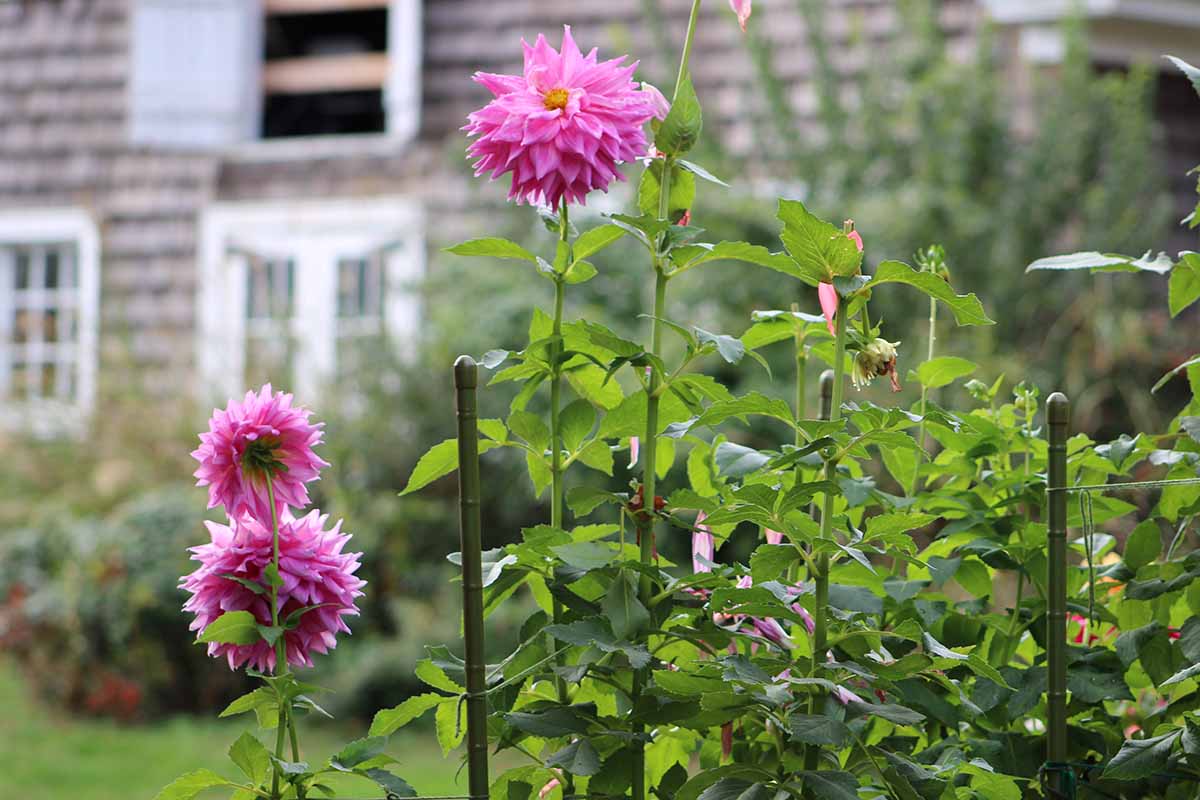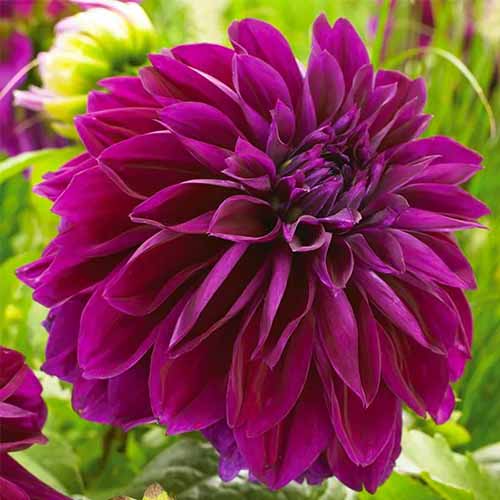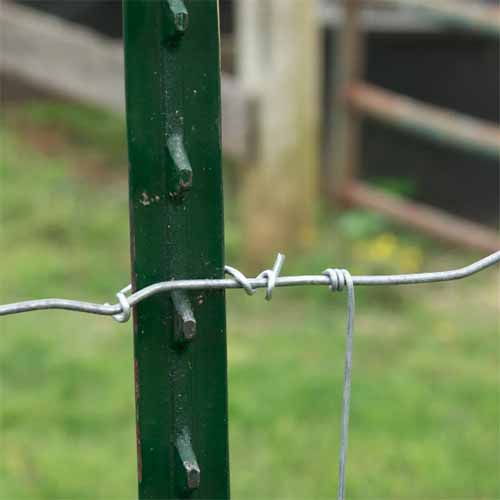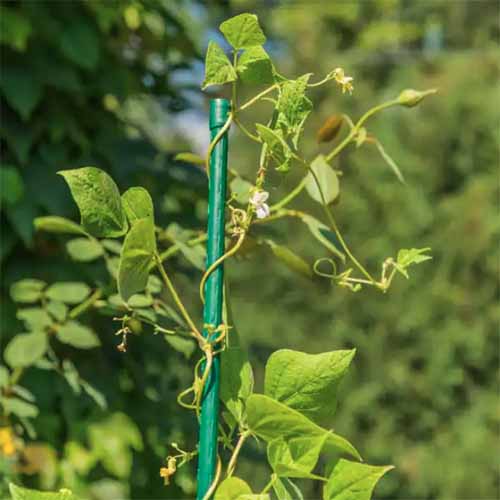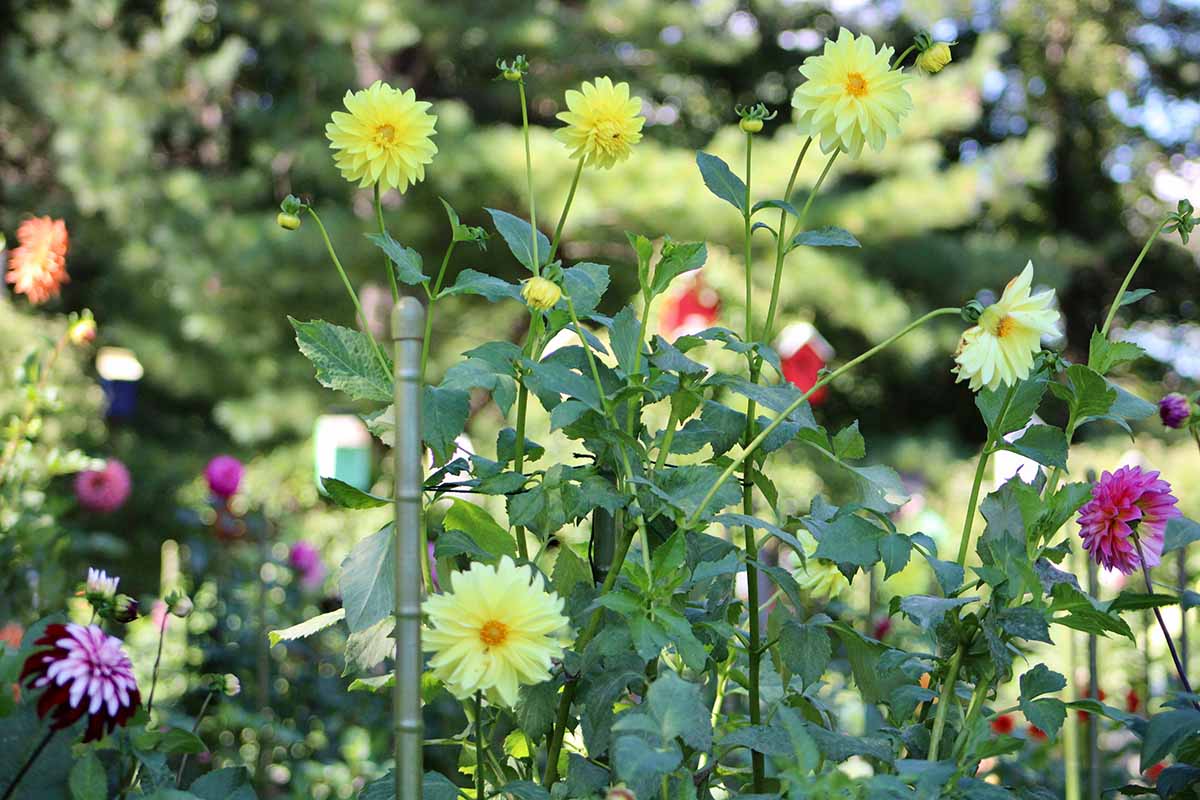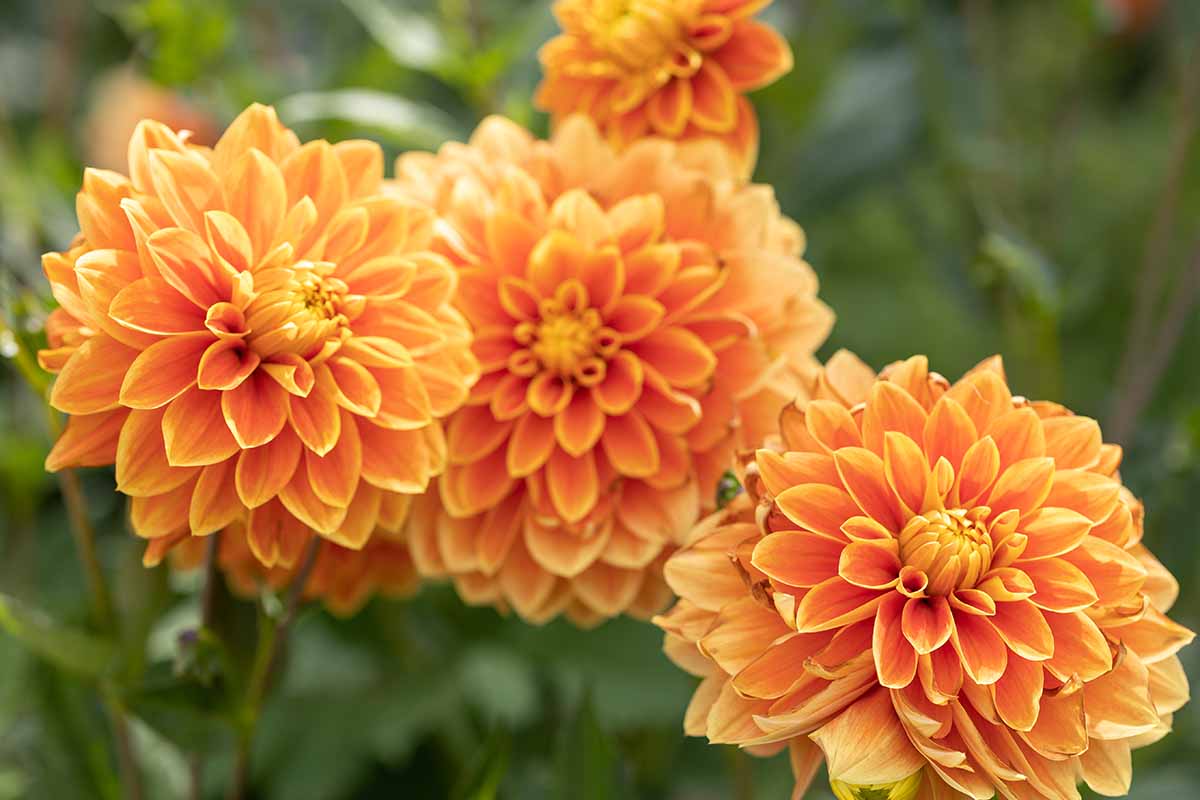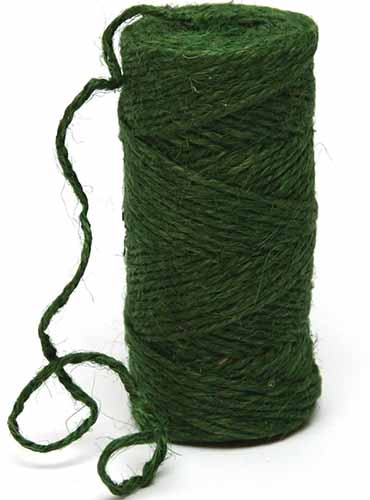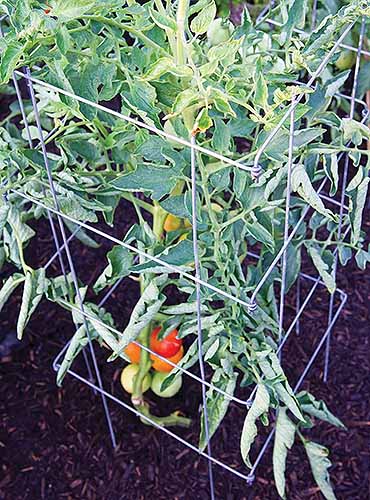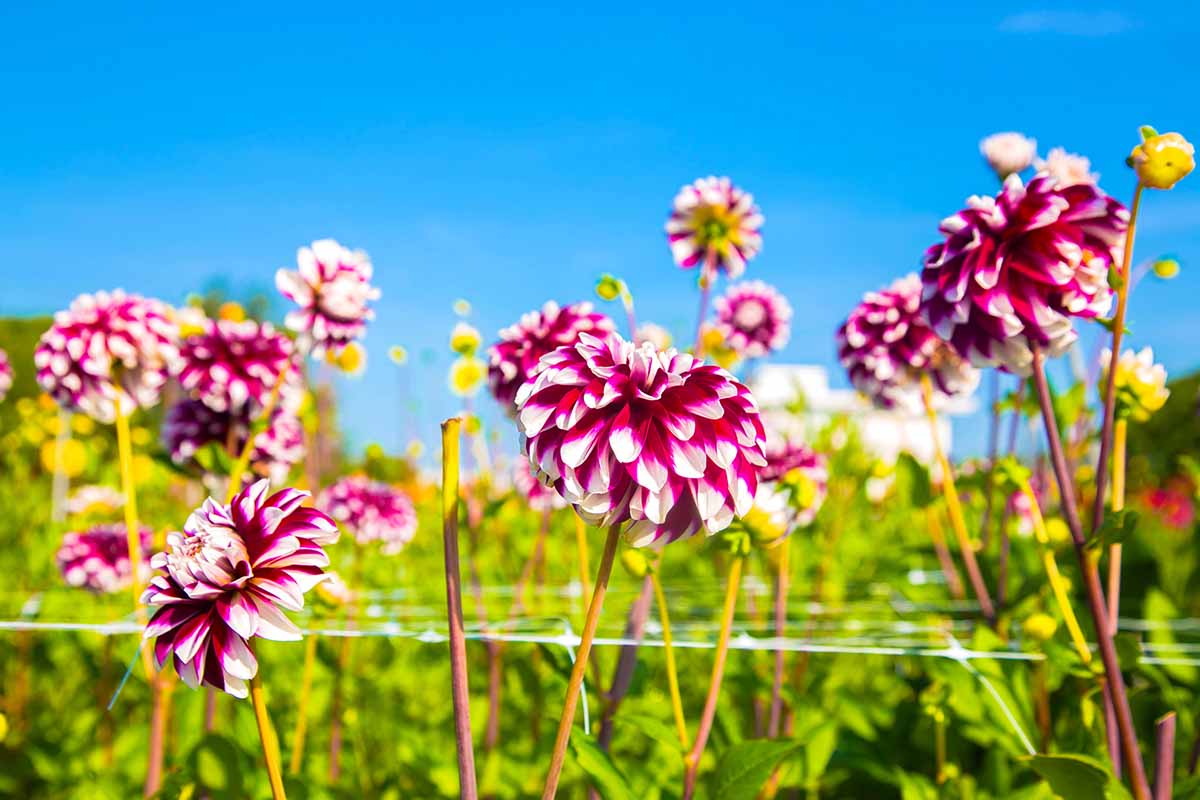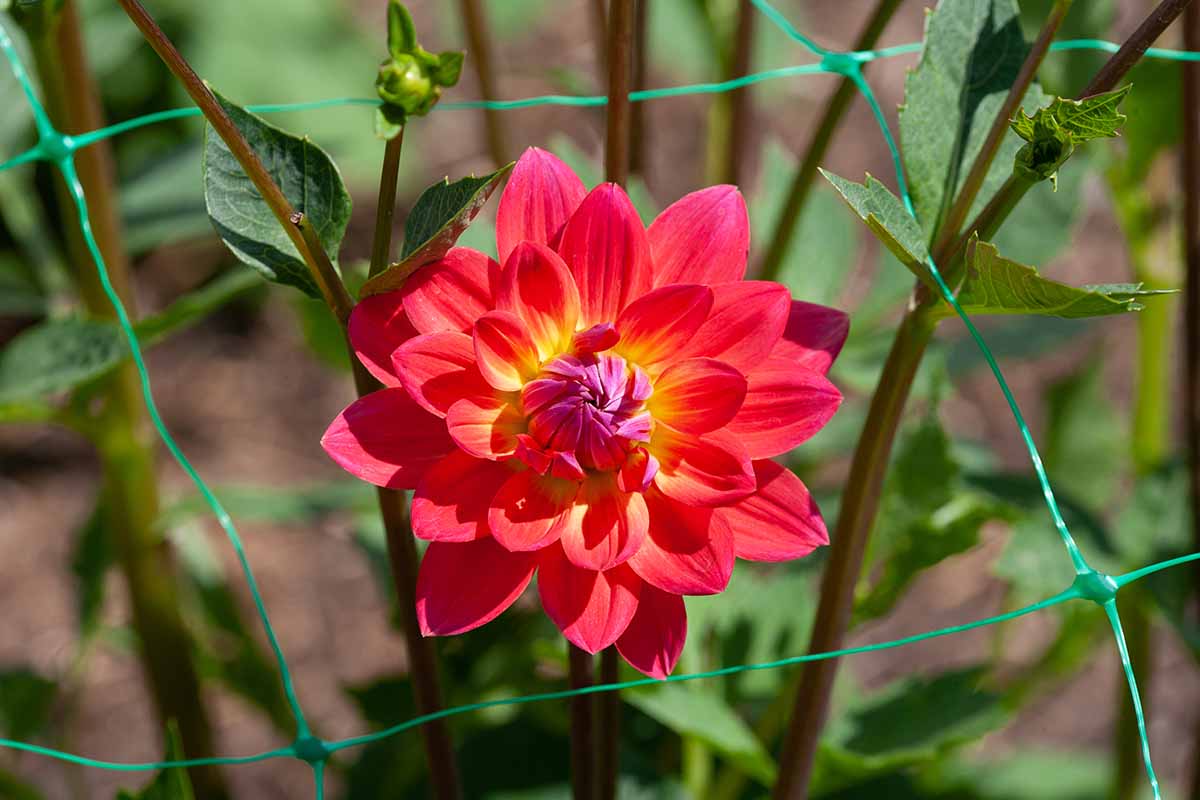We link to vendors to help you find relevant products. If you buy from one of our links, we may earn a commission. We all spent most of the day wandering around her ambitious landscape, goggle-eyed in admiration. I thought choosing the flowers for her bouquet might have been the gardener’s equivalent of asking a parent which of their children they love the most. But Lynda didn’t hesitate, choosing a massive bunch of cream, pink, and burgundy dahlias (Dahlia spp.) with trails of asparagus fern (Asparagus plumosa) and bells of Ireland (Molucella laevis). The result was a bouquet so big it covered half her dress and – by design – her six-month-pregnant belly. I barely remember her dress and never saw the belly, but I won’t forget the resplendent flowers. Like Lynda, I was a dahlia fan from the moment my first plantings burst into bloom. The problem with growing them in my garden is the wind. The weather can be still and calm one minute, then blowing an assertive, stem-snapping breeze the next. Maybe they topple for other reasons in your backyard. But these long-stemmed beauties are prone to bending, and it’s not just you. So what’s a gardener to do? There are several dahlia support techniques available to suit everyone’s time constraints, budget, and patience. Let’s take a look, shall we?
Why Do You Need to Support Dahlias?
The waving, happy faces of some dahlia varieties can reach up to five feet high. The midrange is around three feet. However, their main support stems are green and too soft to stand up to much more than a gentle puff of wind. Dwarf varieties are the exception, which only reach about a foot in height and don’t tend to be in the danger zone. Battling the windy weather after finding countless blossoms with their heads on the ground like fallen soldiers led me to try all sorts of staking over the years: none in my naively optimistic first year, a failed attempt with bamboo canes in the second, and a complicated, time-consuming, and extremely frustrating weaving attempt with garden twine in the third. Fifteen years later, I’ve got dahlias all over the place and no patience, so I now invest in buying all-in-one supports that take just five seconds per plant to install and can be reused every year. Let me save you a little bit of time. A good support system keeps the plants growing straight, prevents the flowers and foliage from bending or breaking, and helps air move through the foliage so you can avoid disease issues such as gray mold and powdery mildew. Read more on how to prevent diseases in our guide to growing dahlias.
The Best Stakes for Dahlias
First off, don’t use thin bamboo stakes. They’re going to be either too short or too flimsy to push into the soil to a depth that will support the weight of a dahlia’s foliage, and they’re not strong enough to support plants being buffeted in the wind.
Why You Need Support in Place from the Start
Disorganized gardeners or those strapped for time may find themselves doing this when the foliage is already too high. If your chosen varieties only reach three feet or so, you can get away with four-foot (48-inch) stakes. For the tallest varieties, such as ‘Pineland Princess’ and ‘Thomas Edison,’ they’ll need to be six feet long, and rammed in at least one foot deep. ‘Pineland Princess’ If you’re up for a challenge and interested in going big, you can find rosy pink ‘Pineland Princess’ dahlias available from Nature Hills Nursery. ‘Thomas Edison’ The stately ‘Thomas Edison,’ with huge dinner plate blooms in a stunning shade of purple, is also available from Nature Hills Nursery. Both of these cultivars reach heights of about 36 to 48 inches. Of course, keep in mind that wood will eventually rot or may split and need to be replaced. Another option is steel T-posts which come in various lengths. Steel T-Posts These T-posts from Home Depot are made from extra-hard rail steel and are coated to prevent rust. There are also steel posts coated in green plastic that you can use, so they blend in with the foliage. Plastic Covered T-Posts Find these in six-foot lengths from Home Depot. Alternatives include half-inch rebar, aluminum conduit, 1.25-inch PVC pipe, and fiberglass stakes. Then there’s my favorite option: cages! Keep reading to learn more about these when we discuss supports in more detail below. I know I’ve been there, and it’s not uncommon to end up standing on or knocking over something important, like a neighboring plant. Don’t let this be you, and try to get an early start. Set a reminder on your phone, or make a note in your gardening journal of when the sprouts first emerge from the tubers so you’ll be ready to get out there and start staking. Depending on the system you choose, start threading soft garden cloth or twine around and between plants when they’re around eight to 12 inches high, then add another layer every month or so throughout spring and summer. If you use netting, its extra support means two layers may do the trick, installed at around 16 to 18 inches and 32 to 36 inches off the ground.
Recommended Supports
Ideally, you want to put a support system in place before you plant so you can avoid accidentally impaling the tubers. If your tubers are already in the ground, be sure to check where each is located to ensure the stakes aren’t too close.
For Single Plants
A dahlia has a strong central stem, or sometimes several of these. But the heavy foliage means it’s at risk of flopping over as it grows. Here are a few easy options to help yours stay upright: Some dahlia enthusiasts cut a long piece of twine – around three feet – so they can tie a loop, secure the ends to the stake, then use the remainder to tie another loop higher up as required so they don’t need to remember the string and scissors every time they venture out to the flower beds to do a little maintenance. You may get away with using just one if your garden is very sheltered and the plants are close together, helping to support each other. In this case, you can use garden twine or a twist tie to secure the stems. US Dahlia Society legend Harry Rissetto recommends soft, three-ply garden twine. Jute Garden Twine You can find a similar biodegradable jute garden twine in 200-foot rolls from Burpee. If you’d prefer to use twist ties, this product from Burpee has a bendy wire core coated in foam to protect the stems and is easy to twist around the stakes. Soft Twist Ties Dahlia growers employ a variety of techniques if they’re using twine. The goal is to create a loose loop around the stem and a tight knot around the stake. This is one simple method:
Cut a two-foot length of twine.Tie one end to the stake – use a simple overhand knot (the first knot you tie when doing up your shoelaces), then make a second so you form a tight knot.Run the twine behind the stem, just under a set of leaves – don’t pull it tight, just rest it loosely against the stem.Tie the remaining twine to the stake using overhand knots – be careful not to accidentally tighten the loop around the stem as you do so.
If your garden is breezy, or there’s the likelihood of heavy rain, you’ll need multiple supports. Strong winds and lots of rain can cause the foliage to sag or fall over, bending or breaking stems. Use either three stakes to form a triangle-shaped structure or four to form a square around the plant. Provide 12 to 24 inches on either side of the tubers to allow room for the growing plant. You can also angle the supports outward so they form a funnel, which creates a little more room for the dahlia’s often top-heavy foliage. Use a mallet or similar tool to ram the stakes into the soil seven to eight inches away from the tuber – or the spot where you intend to plant it. Tie the string to one stake, then run it around the outside of your supports, winding it around each one so it stays tight. Tie the end to the first stake to create a corral around the plant.
For Mass Plantings
If you have a lot of dahlias plants growing in rows or a large clump, it’s more time-efficient to create a support system that surrounds the lot. Plant Cage I use 48-inch ones, like these from Burpee. Galvanized Tomato Cage Home Depot has individual cages available that are painted green to blend in with the foliage. Halatool Expandable Tomato Cage The cage “legs” are thin and strong, so it’s easy to push them down into the soil. If I have more dahlias than cages, I put a cage around every other plant, then tie garden twine from one cage to the next to support the plants in between. I’ve never needed to add extra support, but if you’re gardening in a windy climate, thread twine across the cage and tie it to either side. I’ve learned the hard way that retrofitting supports around the soft, floppy foliage of young plants any taller than this often ends in a mess of damage to leaves and stems. However, check out this amazing product from Gardener’s Supply which allows you to encircle and support even a large plant. It might be just what you need. Vertex Lifetime Cage If you’re growing the tallest dahlia varieties, a standard 48-inch cage won’t be big enough – once it’s pushed down into the soil, it only stands about 36 inches high. K-Brands Tomato Cage Another solution is to ram in a five- or six-foot-long support into the earth and slide the cage over it. Once the foliage reaches above the height of the cage, use loops of twine tied to the stake to secure the tallest stems.
Stakes and String
This method uses stakes around the outside of a row or bed to “corral” multiple dahlia plants. Place them every three feet, then run a length of twine around the outside before your plants reach eight inches tall. As plants get taller, run twine diagonally across the middle of a row or bed for extra support. An alternative is the “Florida weave” technique, more commonly used for tomato plants. Place stakes between each plant, then weave twine in and out, wrapping it around each one to keep it tight. Once plants are around eight inches high, she weaves her first level of support just above them. Her preference is a soft black plastic garden twine that disappears into the foliage and stays tight even when wet. She’s the author of “Dahlia Breeding for the Farmer Florist and the Home Gardener” and runs a no-till, quarter-acre organic dahlia farm in Santa Cruz, California where her specialty is breeding hybrids for use by florists. Dahlia Breeding for the Farmer Florist and the Home Gardener To successfully develop just a few hybrids, Albrecht grows around 1,000 plants a year and every one of them is important, so it’s vital they get good support. She uses a homemade rammer, a 12-inch length of galvanized pipe with a cap screwed on one end. This is placed over the end of each stake so she can easily pound it into the soil. Fence Post Driver Albrecht has two plants per row sitting back-to-back, making each row around three feet wide. She has steel posts in the four corners of the bed, and then placed every three feet along each side, opposite each other. First, she creates an X pattern between each set of four posts, winding it around each stake to keep the string taut. Once plants grow another eight inches, she runs the twine around the outside, again winding it around each stake so it stays tight. For the next level, she repeats the X patterns, then follows this with another big loop around the outside. She repeats this sequence until the plants mature.
Trellis Netting
As the stems emerge, roll out the netting over the bed so you can work out the placement of the side supports and the length you require, then cut to size. Tenax Horticultural Netting Trellis netting is made of strong plastic, yet it’s easy to cut to length using sharp scissors. The size of each square varies – one with four- to six-inch mesh works well for dahlias. Ram stakes in at each corner of the bed, and then about every three feet along both sides of the netting. Attach the netting at one end using garden twine, twist ties, wire, or zip ties. Pull it tight at the other end and attach it to the stakes in the same way. Repeat with the stakes down either side. Depending on the mature height of your dahlias, you may only need two layers of mesh, one at around the 18-inch mark, and a second at 36 inches. You can add another layer if your dahlias are especially tall. How do you support your dahlias? Let us know in the comments section below, and feel free to share a photo! These fabulous flowers come in a range of colors and delightful forms, offering an easy way to add glamor to your garden. What’s next on your reading list? Check out our other guides to growing dahlias:
How to Grow Delightful Dahlias: A Late Summer StandardHow to Identify and Control Dahlia PestsHow and When to Divide Dahlias
